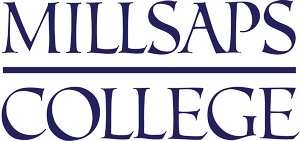The conversation around concussions will benefit from additional research, thanks to work set to begin soon at Millsaps College.
Dr. Nicolas Brunet, assistant professor of neuroscience, has been awarded a stipend by the Mississippi IDeA Network of Biomedical Research Excellence (INBRE) to conduct a three-year study that aims to use eye movements as a biomarker to diagnose concussion.
“More than half of the human brain is devoted to vision,” Brunet explained. “Of the twelve pairs of cranial nerves, which emerge from the brain and carry sensory and motor information, three are dedicated to eye movements. Any blow to the head will thus likely affect vision and/or ocolumotor control. Therefore, it makes sense to study eye movements to determine if something is off.”
Brunet also noted that using simple sideline tests is not a reliable way to determine if an athlete is safe to return to the field after taking a hit, because every blow is unique, and it is possible that the consequences of a hit to the head may not be realized until days later.
Prior to teaching at Millsaps, Brunet worked in New York City, where he was trained by world-renowned experts in eye movements. He discovered that eye movements could be used as a biometric, similar to fingerprints or handwriting. If someone were to injure their dominant hand, it would make a marked change in their handwriting and clearly illustrate a problem. Similarly, Brunet hypothesizes that if the brain is damaged, the patient’s eye movements will be affected as a result.
To explore this, Brunet is working with Millsaps Athletic Director Aaron Pelch to test each athlete at the College. Over the course of 30 minutes per student, Brunet will assign a series of small visual tasks to extract 45 different variables. These variables will be used to evaluate how eye movements should behave in a normal brain and compared to the test results of a concussed athlete. Ultimately, Brunet hopes an upcoming iPhone app could pick up on these miniscule eye movements, and allow the detection of a concussion immediately on the sidelines of a sporting event. “It would be very pretentious to say that in a couple of years I am going to come up with something that can diagnose concussions, but I hope to make a contribution to the field,” he said.
Sarah Hayek, ’22, is one of six students who will be assisting Brunet in conducting his research. “I personally got involved because I am still unsure if I want to do a pre-med route or engineering, so I thought if I did research pertaining to both tech and the body it might make things clearer for me,” she said. “I’m also a student athlete (women’s tennis), but I played soccer and basketball in high school so concussions were a big part of those sports. I got super interested by the fact that this project would tie in both the student and athlete.”
Miller Cochran, ’20, a neuroscience major, joined the project to gain research experience and get some lab time under his belt. “I have Alzheimer’s disease on both sides of my family, and the mysteriousness of the brain has always interested me.” He added with a smile that Brunet has a great sense of humor, which also motivated the desire to work alongside him. “I believe the study will be beneficial for athletes who are concerned about concussions; a quicker diagnosis would mean better care, and that’s exactly what we are hoping to find evidence for in this eye movement experiment,” Cochran said.e
